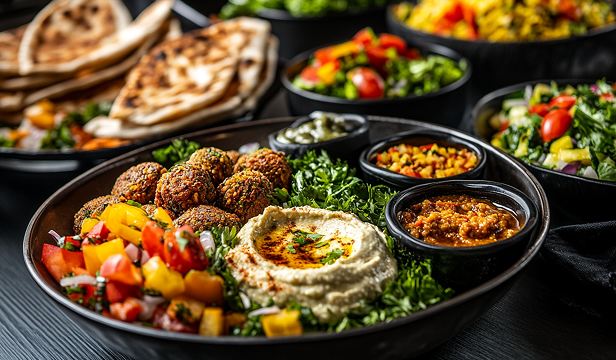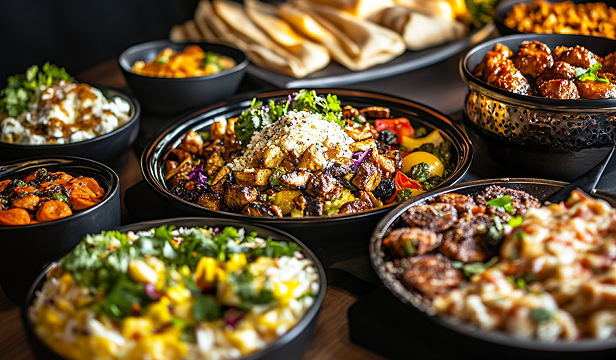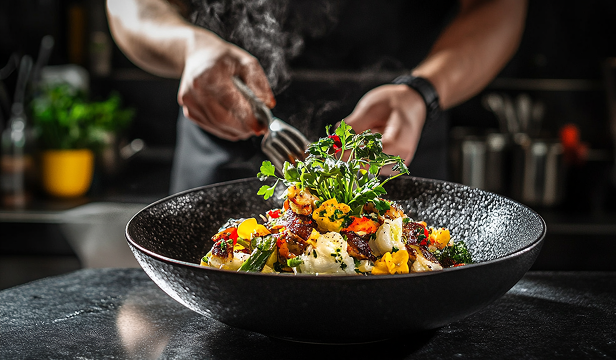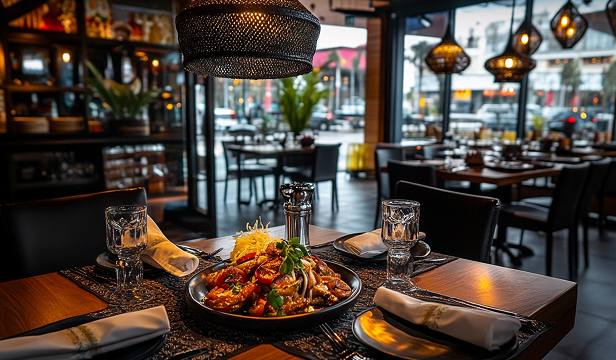Introduction Middle Eastern art is renowned for its intricate patterns, rich colours, and deep cultural…

The Science of Colour in Food and Art: How They Influence Appetite
Introduction
Colour is a powerful sensory cue that influences both art and gastronomy. In both fields, colour impacts perception, emotion, and experience. The way food is presented, much like how colour is used in paintings, affects how we interact with it, making colour a fundamental element in stimulating appetite and evoking emotions.
The Psychology of Colour in Food
Studies have shown that colours directly influence appetite by affecting our perception of flavour, freshness, and desirability. Here’s how different colours play a role:
- Red: Stimulates hunger and increases energy. This is why red is often used in restaurant branding and fast-food chains.
- Yellow: Creates a sense of warmth and happiness, making food appear more inviting.
- Green: Associated with health and freshness, commonly used for salads, vegetables, and natural products.
- Blue: Rare in natural food sources, blue is known to suppress appetite and is often avoided in culinary presentations.
- White: Suggests purity and simplicity but can sometimes make food appear bland.
- Black & Dark Shades: These colours convey sophistication and luxury, often used in fine dining experiences.
The Role of Colour in Food Presentation
Just as an artist uses colour to create emotion and impact, chefs carefully design the presentation of a dish to enhance its visual appeal. Some techniques include:
- Contrast and Harmony: Pairing complementary colours (e.g., red tomatoes with green basil) enhances visual stimulation.
- Plating with Colour Psychology: Using warm colours like orange and yellow to make food appear more appetizing.
- Natural and Artificial Colouring: Many chefs use vibrant natural ingredients like turmeric, beetroot, and butterfly pea flower to enhance the appeal of dishes without artificial additives.
The Connection Between Art and Food Through Colour
Artists and chefs share a similar approach to colour theory. In both art and cuisine:
- Colour evokes emotion: Just as a bold red in a painting conveys passion, red ingredients like chili peppers stimulate excitement.
- Composition matters: A well-balanced palette of colours, whether on a plate or a canvas, creates harmony and intrigue.
- Cultural influence: Different cultures associate colours with specific meanings in both art and food. For example, gold is often linked to luxury and is used in both gilded artwork and edible gold leaf in gourmet dishes.
Scientific Studies on Colour and Appetite
Research has demonstrated that colour affects how we taste and experience food. Some findings include:
- People perceive drinks served in red cups as sweeter than those in blue cups.
- Plating food on white dishes enhances the perception of sweetness and flavour.
- Dim lighting and colour temperature can alter how we experience taste and texture.
Conclusion
Colour is a universal language in both food and art, influencing mood, perception, and appetite. Whether through carefully plated dishes or vividly painted masterpieces, colour theory plays a crucial role in shaping our experiences. By understanding the science behind colour, both artists and chefs can craft more engaging and stimulating creations that delight the senses and enhance enjoyment.



